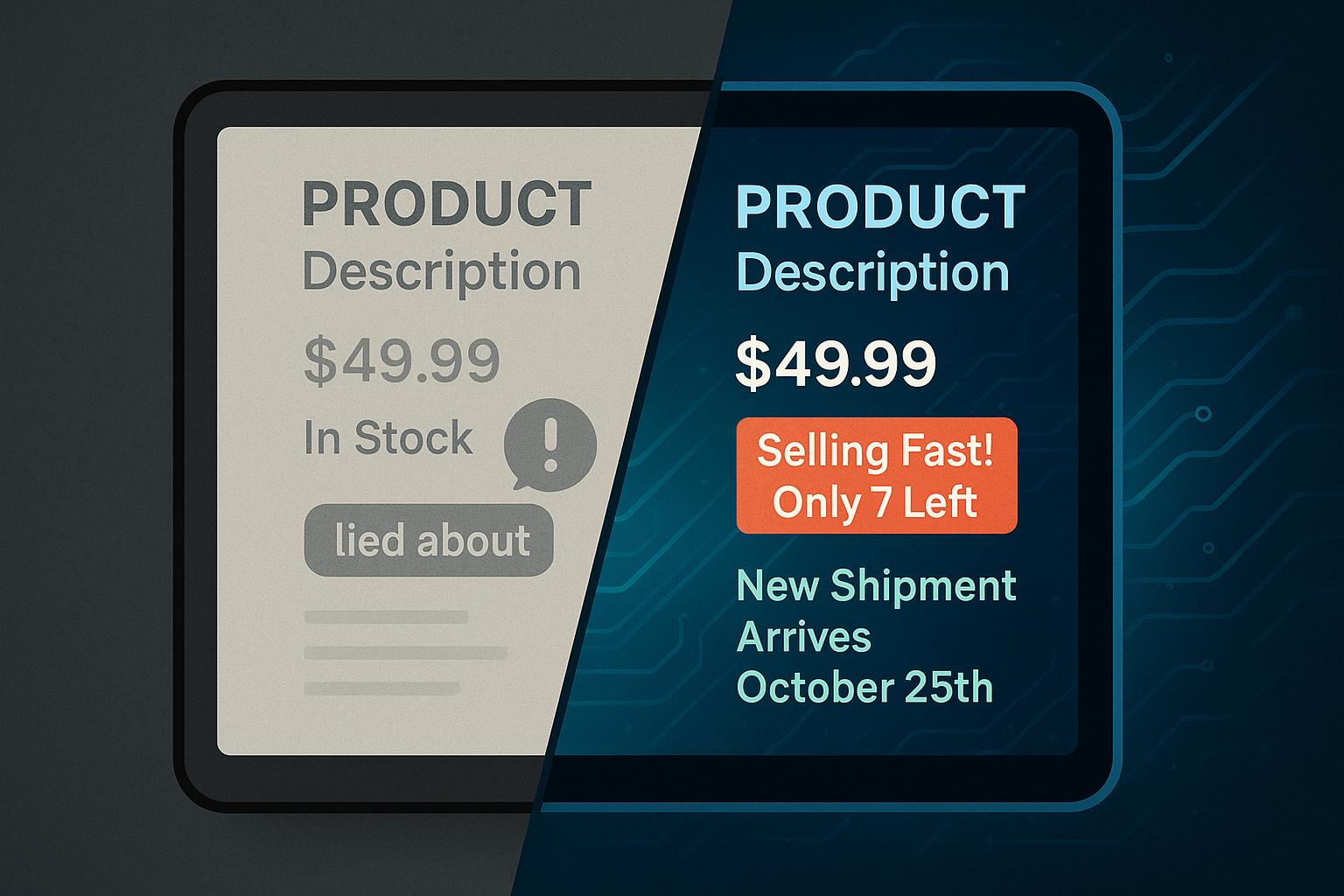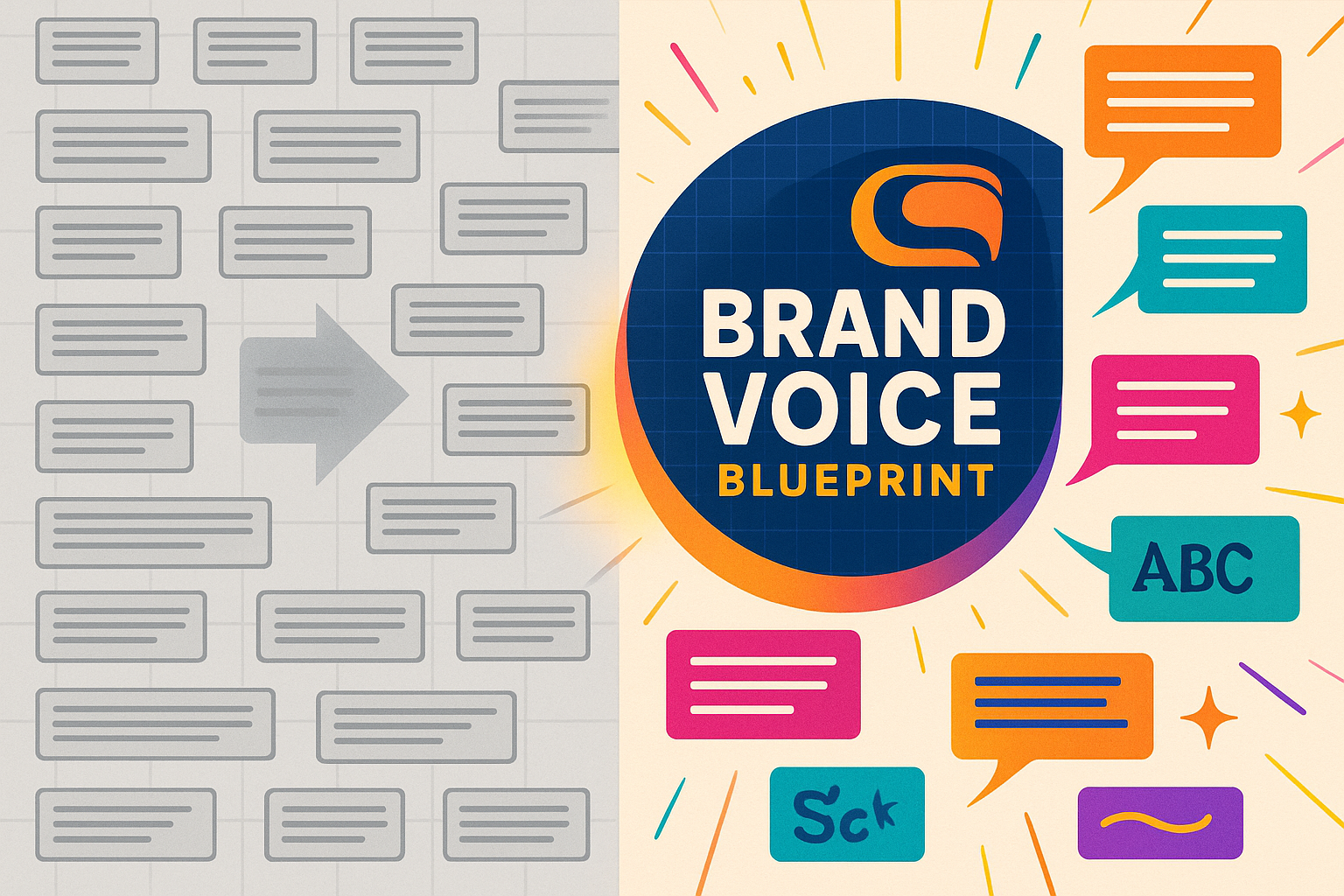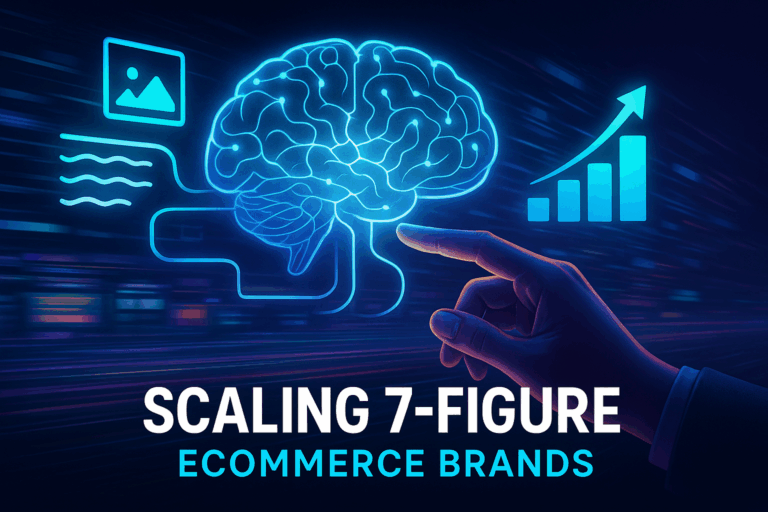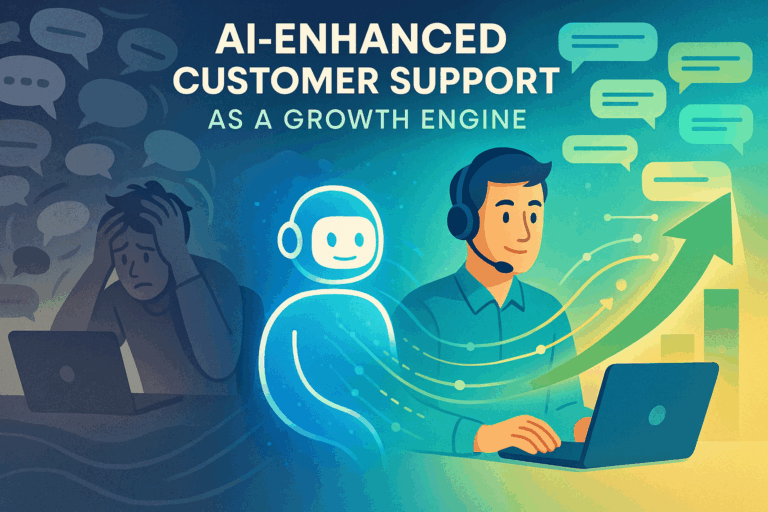Every eCommerce manager has felt that sinking feeling. A customer service ticket pops up: “I tried to buy the blue running shoes you have on sale, but it says they’re out of stock at checkout. What’s going on?”
You check the product page. The description, written two months ago, proudly announces a “Special Launch Discount!” and lists all available colors. The problem? The sale ended last week, and the blue version sold out yesterday. The page is telling a story that’s no longer true.
This isn’t just a minor inconvenience; it’s a crack in the customer’s trust. In a world of instant gratification, a static product description is a liability. It creates friction, disappoints customers, and leaves money on the table. But what if your product descriptions could update themselves, reacting instantly to every change in your business?
The Silent Problem with Static Product Copy
Most brands treat their product descriptions as a “set it and forget it” task. You write them, optimize them for SEO, and move on. But your business is anything but static.
- Inventory fluctuates: Stock levels change by the minute.
- Promotions come and go: Flash sales, seasonal discounts, and clearance events have specific start and end dates.
- Trends shift: What’s a “bestseller” one week might be old news the next.
A static description can’t keep up. This disconnect leads to frustrated customers, abandoned carts, and a huge amount of manual work for your team, who are constantly playing catch-up to edit pages for sales or stockouts. The core issue is that your product information and your marketing messages live in separate worlds that only get updated when someone has the time to do it manually.
Beyond Generation: What “Dynamic” Actually Means
When people hear “AI for product descriptions,” they usually think of tools that generate a block of text from a few bullet points. While useful, that’s just scratching the surface.
Dynamic product descriptions are different. They are living, breathing pieces of content that automatically adapt based on real-time data triggers.
Think of it less like a copywriter and more like a smart assistant who is constantly watching your inventory levels, your promotional calendar, and even customer behavior. This is where specialized AI agents for ecommerce come into play. These systems are designed not just to write, but to orchestrate. They connect your data sources to your content, making intelligent updates on the fly.
How It Works: The Anatomy of a Real-Time Update
It might sound complex, but the logic is surprisingly simple. An AI agent follows a clear, automated workflow to keep your product pages perfectly in sync with reality.
- Data Connection (The Eyes and Ears): The AI agent plugs directly into your core business systems via APIs—your inventory management system (like an ERP), your promotions engine, and your e-commerce platform (like Shopify). It’s constantly listening for changes.
- Rule Definition (The Brain): You set the rules. These are simple “if-then” instructions that tell the agent what to do when specific triggers occur. For example: “IF stock for SKU #123 drops below 10, THEN add the phrase ‘Selling fast—order soon!’ to the first paragraph.”
- AI Action (The Hands): When a trigger is detected, the agent uses generative AI to intelligently weave the new information into the existing description, ensuring it sounds natural and maintains your brand voice. It then pushes the update live to your site instantly.
This isn’t about replacing your entire description. It’s about surgically enhancing it with timely, relevant information that drives action.
4 Dynamic Scenarios That Boost Conversions
When your product pages can think and react, you unlock powerful new ways to engage customers and drive sales.
1. The Low-Stock Urgency Play
Scarcity is a powerful psychological motivator. But manually adding “Low Stock!” banners to hundreds of products is impossible.
- Static Way: A product quietly goes from 100 units to 5. Nothing on the page changes until it’s sold out.
- Dynamic Way: When stock hits a predefined threshold (say, 15 units), the AI agent automatically adds a sentence like, “Heads up: Only 12 of these are left in stock,” directly into the copy. This creates authentic urgency and can significantly increase the conversion rate for the remaining items.
2. The “Out-of-Stock” Save
An “out of stock” message is usually a dead end. A dynamic description turns it into a lead-capture opportunity.
- Static Way: The customer sees “Sold Out” and leaves, maybe forever.
- Dynamic Way: The moment a product sells out, the AI rewrites a portion of the description to say, “We’re currently sold out, but a new shipment arrives on October 25th. Enter your email to be notified first!” It transforms a lost sale into an engaged future customer.
3. The Seamless Sale Transition
Timing is everything with promotions. Manually updating hundreds of product pages at midnight when a sale starts (and ends) is a recipe for errors.
- Static Way: Your team works late to add “Now 20% Off!” to product descriptions. The next morning, you find they missed a whole category, and the copy is still live two days after the sale ends.
- Dynamic Way: The AI agent is synced to your promotional calendar. At 12:01 AM, it automatically adds the sale messaging. The second the sale expires, it removes it. This ensures perfect consistency and frees your team to focus on strategy, not tedious updates. It’s even more powerful when paired with an ecommerce competitor spy tool to ensure your promotions are perfectly timed against market shifts.
4. The Seasonal & Trend Pivot
Your products can have different appeals depending on the time of year or current trends.
- Static Way: A lightweight jacket is described the same way in April and October.
- Dynamic Way: The AI agent, guided by your rules, can reframe the description. In April, it might highlight, “The perfect lightweight layer for cool spring evenings.” In October, it could pivot to, “A great base layer for your autumn adventures.” This ensures your messaging is always relevant, which is a cornerstone of effective Google Shopping SEO services.
But Wait… Common Questions and Concerns
Adopting this technology naturally brings up questions. Let’s address the most common ones.
Will it sound robotic and hurt my brand voice?
This is a valid concern. The key lies in sophisticated prompt design and a “human-in-the-loop” approach. Instead of telling the AI to just “add low stock info,” you design a prompt that says, “In our friendly and helpful brand voice, weave in the fact that only [stock_level] units remain, creating a sense of gentle urgency.” The best systems allow for review and approval, ensuring the AI acts as a powerful assistant, not an unchecked robot.
Is the technical setup a nightmare?
While it involves connecting systems, modern platforms are built around APIs, which are designed for this exact purpose. The goal isn’t for marketers to become programmers. The goal is to use solutions that offer pre-built integrations with major platforms like Shopify, BigCommerce, and key inventory systems, simplifying the connection process.
What if the data is wrong?
Data integrity is crucial. The system is only as good as the data it receives. That’s why implementing fallbacks is a best practice. For example, if the inventory data feed fails, the system defaults back to a standard, non-dynamic description. This prevents an error from displaying incorrect information on your live site.
The Big Picture: From Static Pages to Smart Experiences
Implementing dynamic, AI-driven product descriptions is about more than just efficiency. It represents a fundamental shift in how you manage your digital shelf.
You move from a world of static, often outdated information to a world of living, breathing product pages that are always accurate, relevant, and optimized to convert. It bridges the gap between your marketing message and your operational reality.
This alignment doesn’t just build trust with customers; it creates a more resilient and agile business that can react to market conditions in real-time.
Frequently Asked Questions
What is an AI dynamic product description?
It’s a product description that is automatically updated in real-time by an AI system based on live data triggers, such as changes in inventory levels, the start or end of a promotion, or other business rules.
How is this different from a normal AI copywriter?
A standard AI copywriter generates static text based on a one-time prompt. A dynamic system is an ongoing process. It continuously monitors data sources and makes intelligent, targeted edits to existing descriptions without needing a new prompt each time.
What data does the AI need to work?
At a minimum, it needs access to your product catalog (SKUs, current descriptions), your inventory management system (stock levels per SKU), and your promotions calendar (sale items, start/end dates, discount details).
Do I need to be a programmer to set this up?
No. While the underlying technology is complex, modern solutions are designed for marketers. They typically involve setting up integrations and defining rules in a user-friendly interface, not writing code.
Is this expensive to implement?
The cost can vary, but it’s important to frame it in terms of ROI. Consider the cost of lost sales from out-of-stock friction, the man-hours spent on manual updates, and the conversion lift from perfectly timed urgency and promotional messaging. For many 7-figure brands, the return far outweighs the investment.
Your Next Step: From Awareness to Action
The gap between what your product pages say and what’s actually happening in your business is likely wider than you think. Closing that gap is no longer a futuristic dream; it’s a practical, achievable advantage.
Start by auditing your own site. How many product pages currently have outdated information? How long does it take your team to update copy for a flash sale? Answering those questions is the first step toward building a smarter, more responsive, and more profitable online store.







